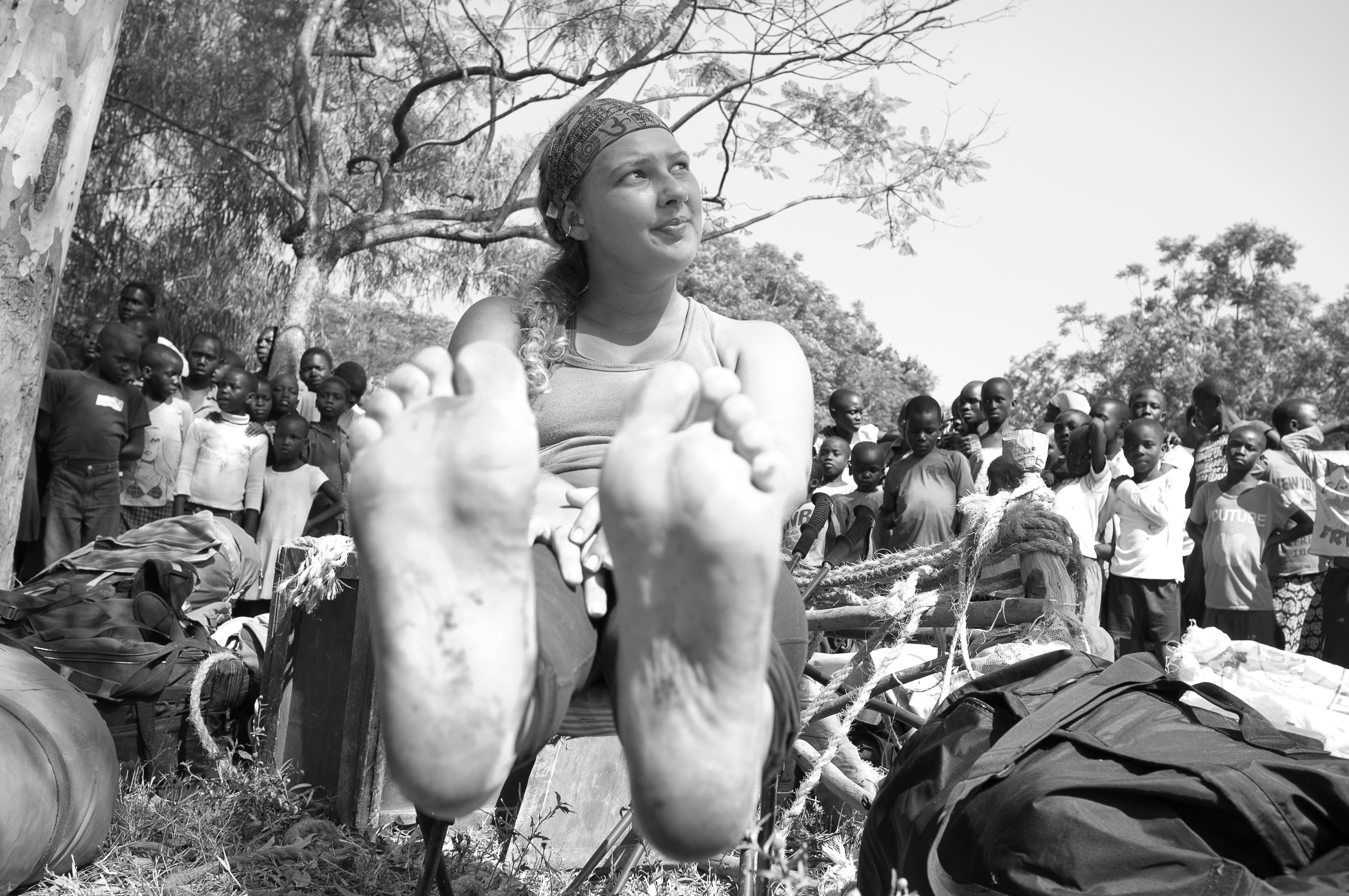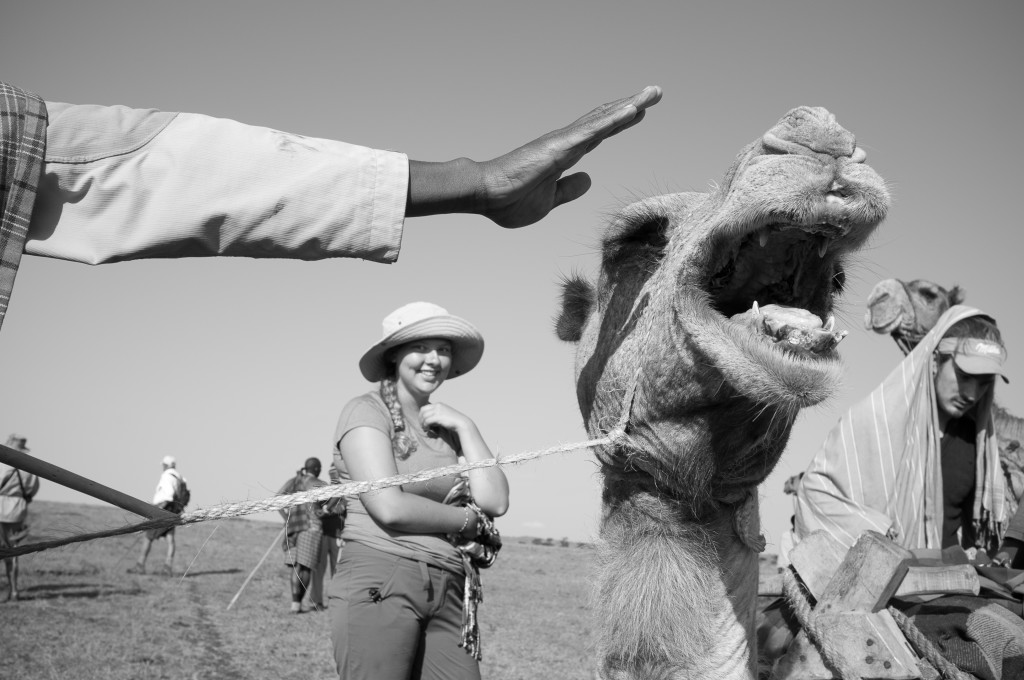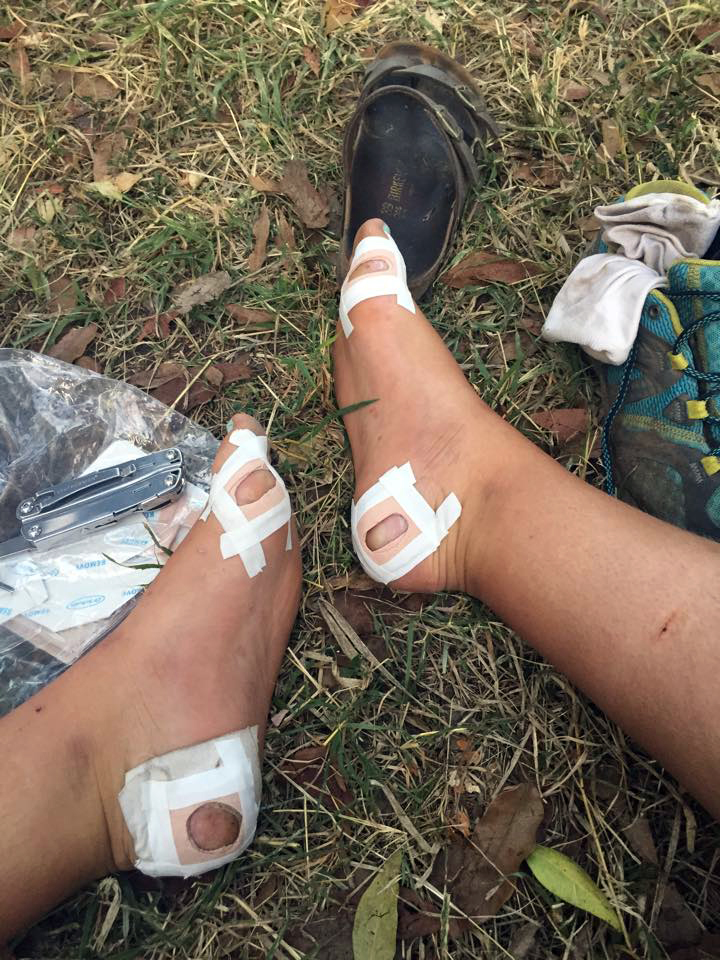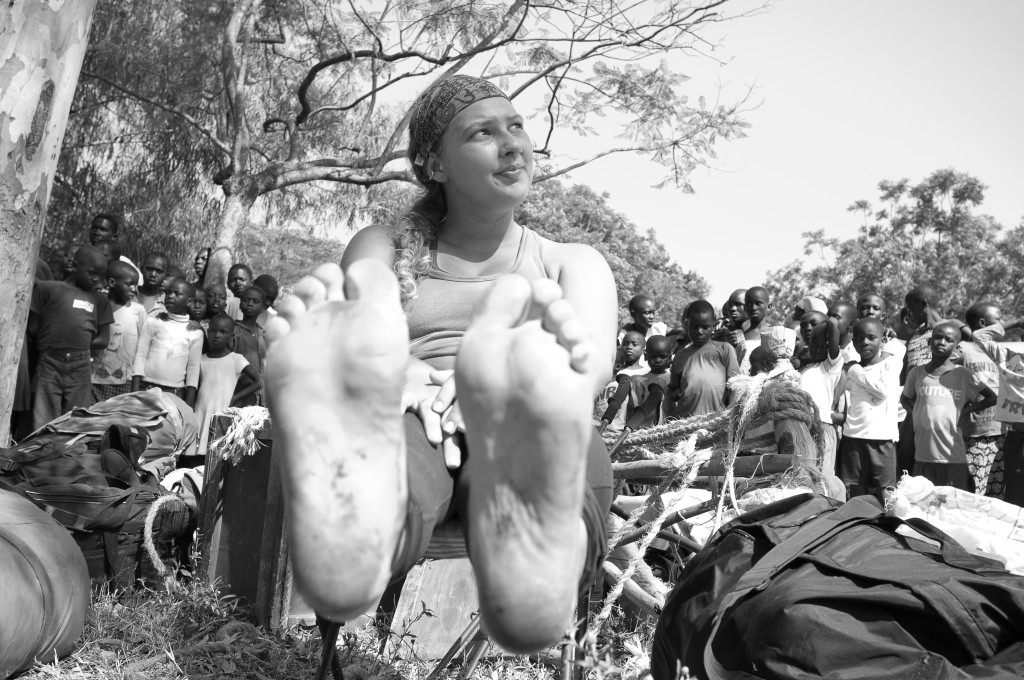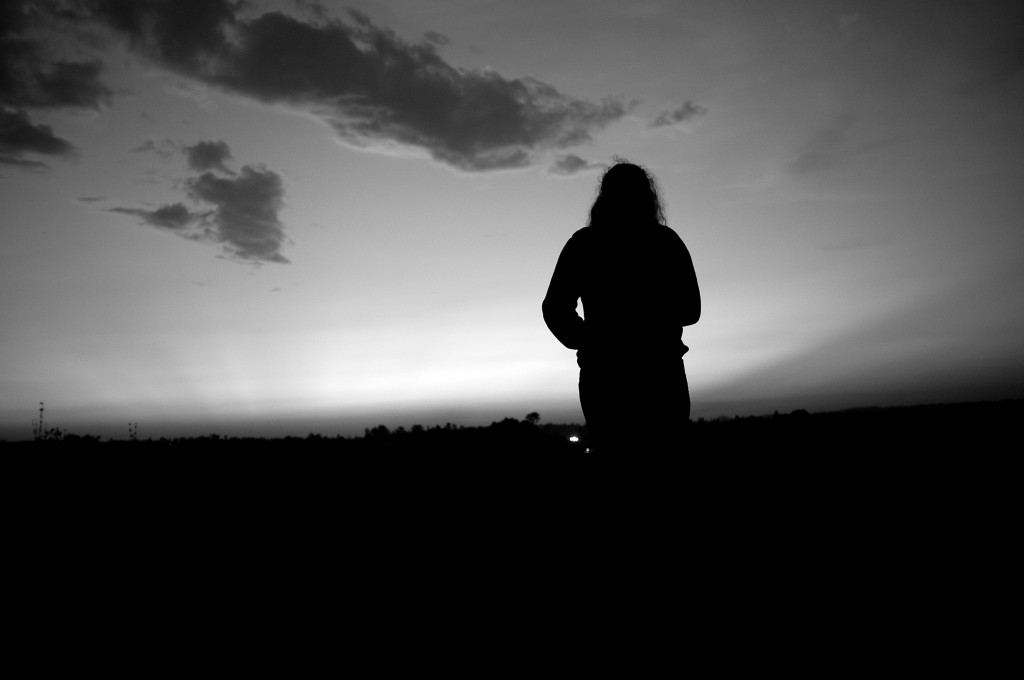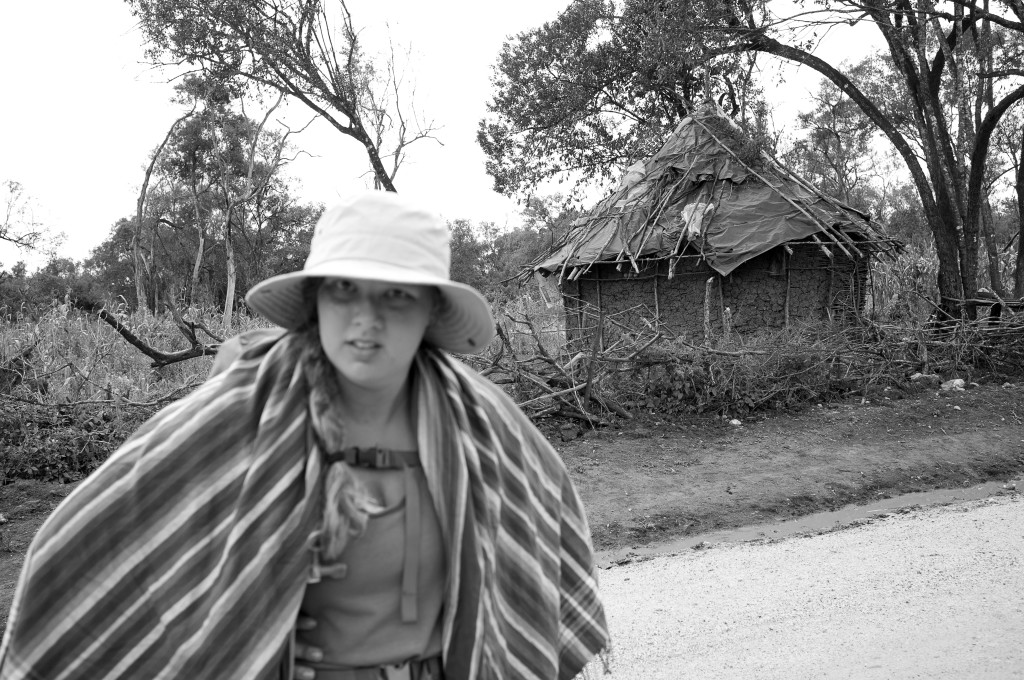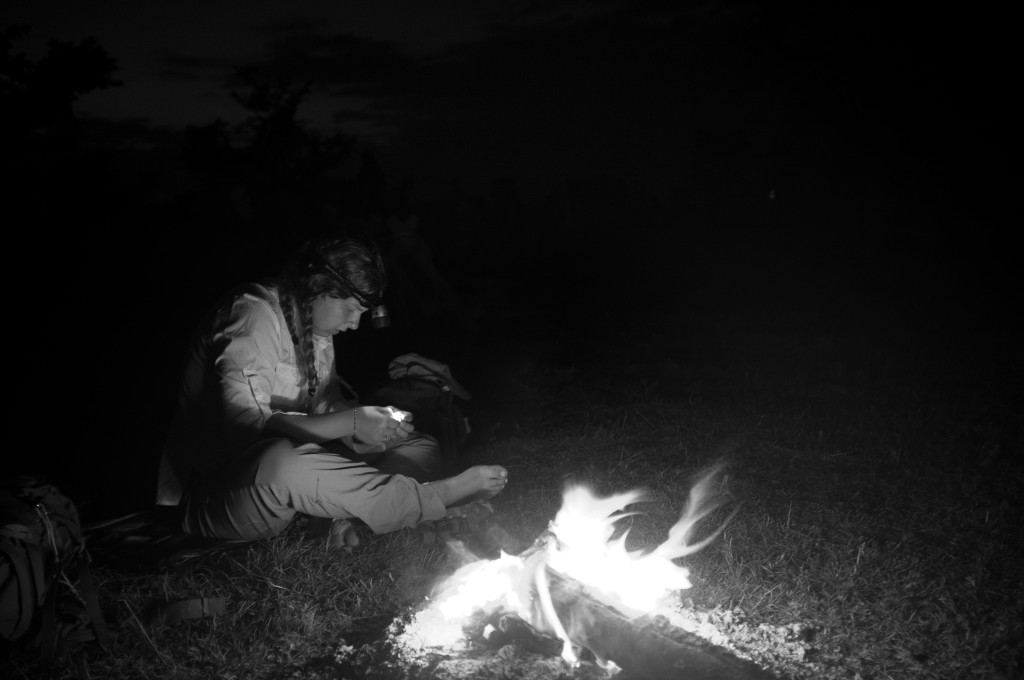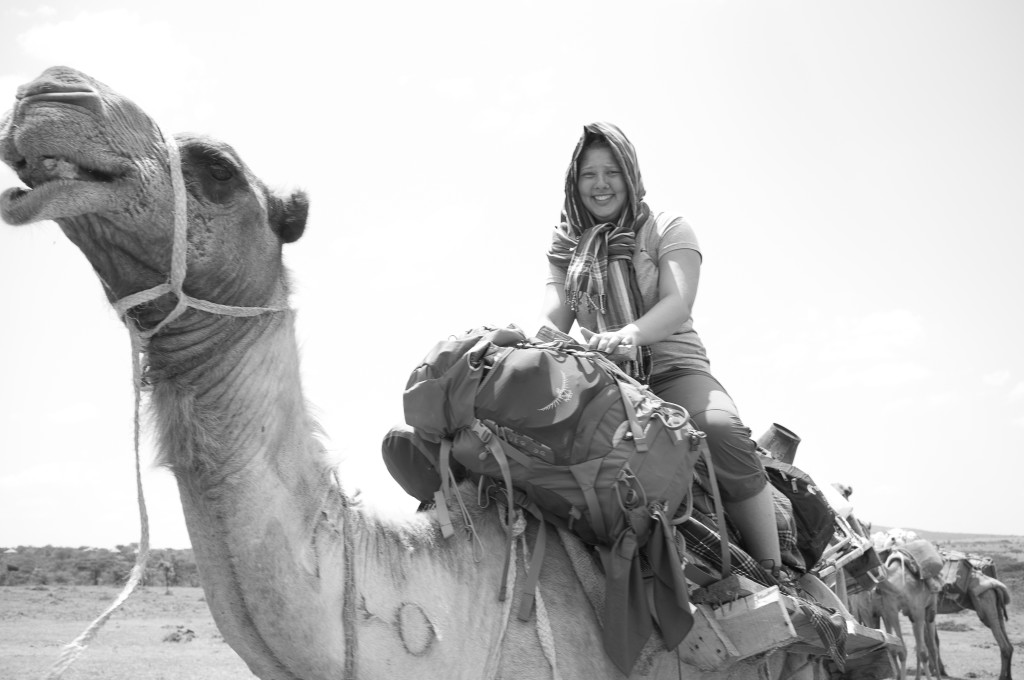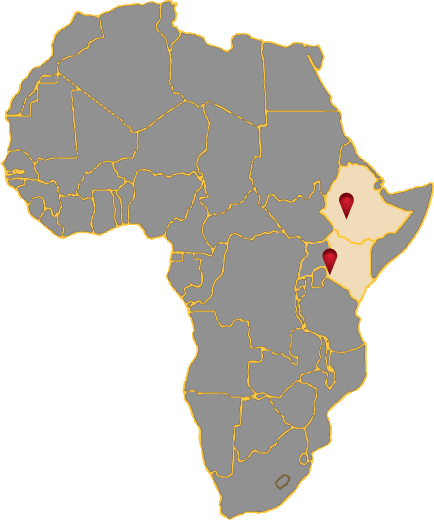This is Part 4 of a multi-part essay that chronicles Tembea Na Mimi, a walk across Kenya.
by Jeff James
If strength is measured by one’s ability to persevere, Helena Sarcone had to be one of our strongest walkers. She was usually the last to lace her boots in the morning; bandaging her numerous blisters required time. Often she debated wearing sandals or boots; both caused new sores. It was simply a deliberation on blister distribution. Mapping out future blisters requires a fatalistic sense of humor, which Helena possessed in abundance.
By day 3 our blister competition was in full swell. Helena had the most, but mine were the largest. We compared our wounds around the fire at night, arguing over the best way to apply moleskin — plaster it right on top of the hot spot, or cut a hole in the middle so it lay around the sore? I used the plaster-over technique and I could say it worked just fine, but I had the biggest blisters. Helena used the hole technique, and she could say it worked better, but she had the most. Who knows? All I know is that blisters are a scourge; they hurt to walk on, each step a new sensation of pain.
So why would we do this trek, with full knowledge it will hurt? The “Pleasure and Pain Principle” states that all human behavior is motivated by two things – seeking pleasure and avoiding pain. But with these walks, pain’s a given; there’s no avoiding it. The futile efforts of good socks and shoes and the endless crap-parade of moleskin count as attempts to avoid pain, I suppose, but they don’t work.
Each day we awoke knowing that the morning light would be radiant, long and ancient savanna shadows would drape the cool air, and the camels would groan and gnash in contempt for their burdened backs. Those were givens. And so too was the knowledge that the day’s first steps would hurt like hell.
After an hour or so of walking, however, the individuality of each blister morphed into a single, throbbing, vibrant burn. Our steps felt more like bare feet over hot coals — a right of passage best endured without complaint. And really, what would be the point of complaining? We had a mission to complete and a cause greater than ourselves driving us forward.
As a steady reminder of why we walk, a beautiful stream of children meandered through our caravan. Barefoot kids effortlessly scurried around us and over broken, rocky ground. Some had babies holstered to their hips, others carried buckets or bags on their heads. One boy ran by gripping hand-hewn crutches, dragging polio-ravaged legs behind him. This land is not easy to navigate, even for the able-bodied. Every step seems to have an element of peril, in every face a story of hard-earned survival.
Helena saw it too, and so in silent agreement and mutual respect for the path we both must walk, we eased into our stride and into a state of mind, numb to personal pain, and awakened to those who walk with us. As walkers for a cause, we were like mystics who self-flagellate, inviting a bit of pain to bring us closer to the divine.
I’ve heard it said that all art comes from a place of pain. To create something beautiful is to recognize that pain exists. Beauty is a salve for fresh and old wounds. In that sense, Helena is an artist, creating beauty from pain, and finding strength from a point of weakness. Every masterpiece holds a paradoxical twist of those extremes.
The below stanzas are excerpts of a spoken work poem Helena Sarcone wrote, post-walk, in Nairobi. These are lines that paint the beauty of pain and poverty.
“Every time, it’s something
Something different
Jealousy, want, wonder
We all stare
Their malnourished bellies escaping under their shirts
Dirt houses held up by love
Wide eyes follow us
As they stare
On both sides, each stare is met
Some held, others forgotten
But all true”
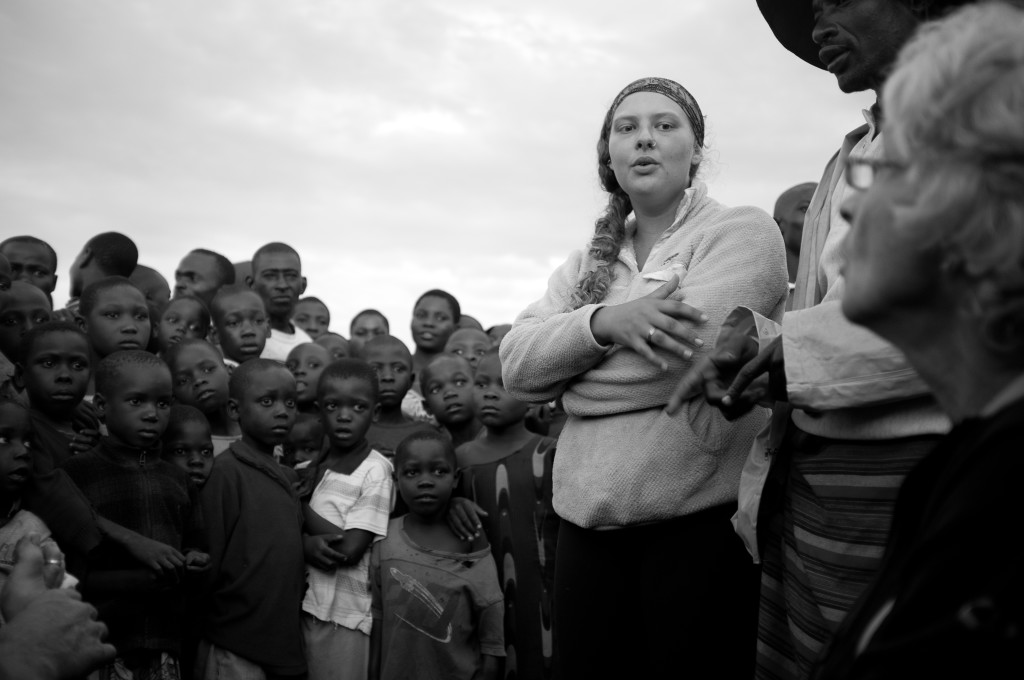
-
Singing “Ooo Le La Lo” to some curious locals. Helena always initiated a song as a way to make friends.

